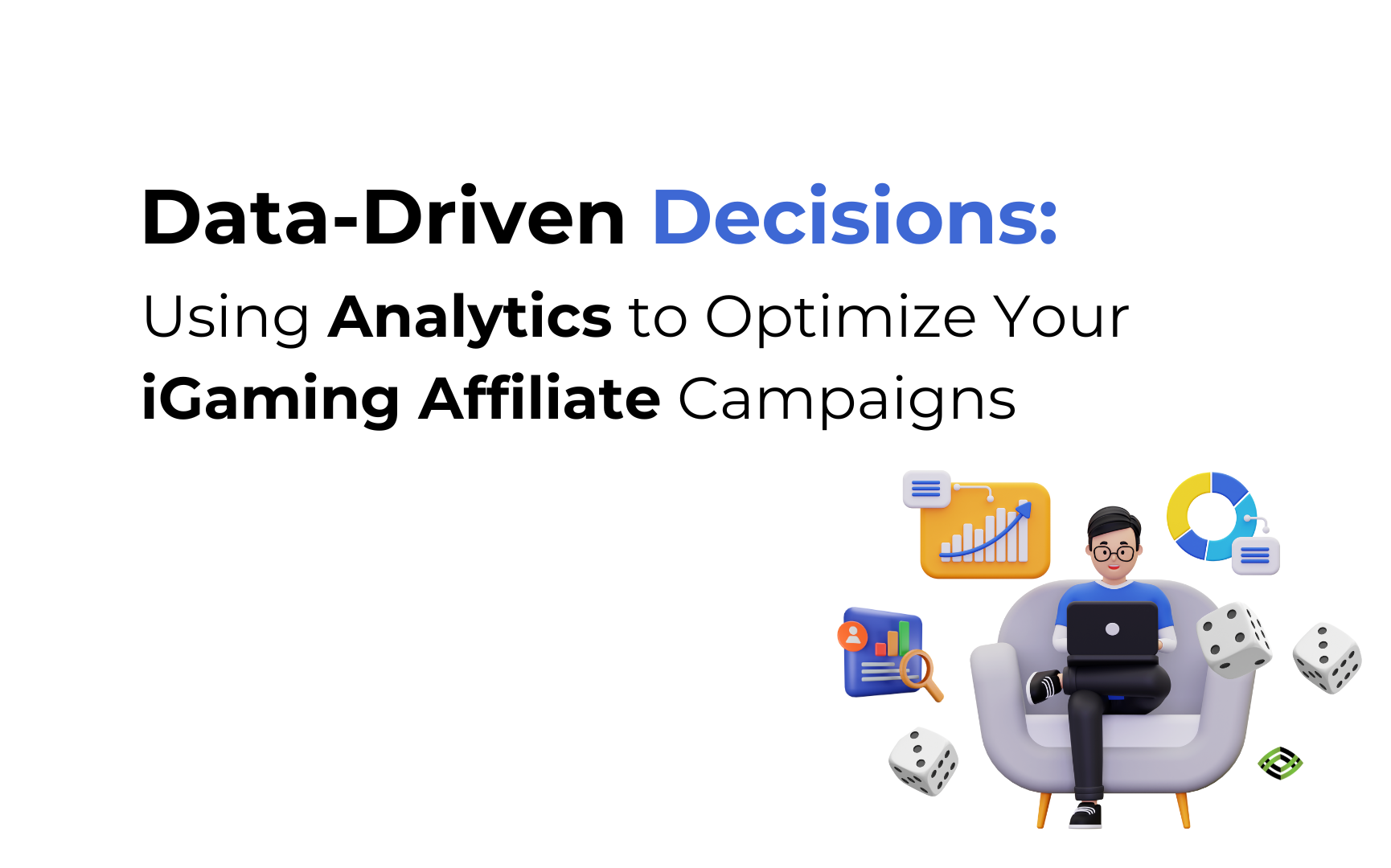For iGaming affiliates, data is the new golden chip, and analytics is the winning hand that unlocks its true value.
Think about it this way: by 2029, it’s projected that 281.3 million people will be gambling online. That’s a huge rise of 81.18% from the 155.3 million users who engaged in online wagers in 2022.
Fast forward to 2029. The information at your fingertips could potentially triple or even multiply beyond that. This flood of data can help optimize your affiliate marketing efforts and maximize your return on investment (ROI). In addition, you may also find an increase in affiliate deals from various platforms.
Any downsides?
Perhaps one – you will have to manage larger and more complex data than ever before.
How Analytics Empowers Data-Driven Decisions
| BENEFIT | DESCRIPTION |
| Target High-Value Players | Discover the whales with the highest lifetime value (LTV). Tailor your campaigns to their preferences. Analytics can reveal preferred game types, deposit methods, and bonus structures. |
| Optimize Your Campaign’s Performance | Track key metrics like click numbers (CTR) and conversion rates. This helps you see which images, landing pages, or unique offers visitors like the most. Using A/B testing, you can refine your campaigns little by little to maximize your ROI. |
| Personalize Your Player’s Experience | Find out what players like and how they behave. Use this information to suggest games they might enjoy, make personalized offers, and talk to them in a way they appreciate. The gaming experience will improve as a result. This may boost player loyalty and conversions. |
| Identify Your Most Effective Acquisition Channels | Find out where your best players are coming from. Analytics shows the best sources, like Search Engine Optimization (SEO), paid ads, or social media. This helps you focus on the advertising sources that give you the most value for your money. |
How To Analyze Your Data In Five Steps:
1. Identify Your Data
- Define Objectives: Set clear, measurable goals for your analysis. This may involve understanding player behavior, improving player retention, or increasing conversion rates.
- Identify Required Data: Include user demographics, behavior, transaction data, marketing data, or any other relevant information.
- Define Metrics or Indicators: Consider measuring outcomes through Key Performance Indicators (KPIs) like Cost-Per-Acquisition (CPA), Lifetime Value (LTV), Net Gaming Revenue (NGR), etc.
2. Collect Relevant Data
- Collect Relevant Data: Consider doing surveys for demographic data and user feedback, interviews for qualitative insights, observations for understanding user behavior on the platform, and data extraction from existing databases for transactional and user activity data.
- Decide on Data Type: Do you use numbers (quantitative data) to answer “how much?” or “how many?” questions, or do you use non-numbers (qualitative data) to understand ideas and experiences, answering “why?” or “how?” questions.
3. Clean Your Data
- Check Data for Errors and Inconsistencies: This can include validating the data, removing duplicates, and detecting outliers.
- Ensure Quality and Reliability of Data: Is your data complete, consistent, and correct? If data is missing or doesn’t match up, it can give wrong or unfair results.
4. Analyze Your Data
- Identify Patterns, Relationships, or Trends: Summarize key features (Descriptive Analysis), identify relationships between things (Correlation Analysis), and observe changes over time (Trend Analysis).
- Use Statistical or Mathematical Methods: Think about using statistical tests to compare groups or test ideas, regression analysis to understand how variables relate, and machine learning to predict outcomes and identify patterns.
- Use Appropriate Tools: Use different tools like Python, R, Excel, SPSS, and SAS for analyzing data. The tool you pick depends on how hard the analysis is and your abilities.
5. Clarify Your Results
- Review Results: After looking at the data, see what it means for your business goals. Look for patterns or connections in the data. Link these findings to your goals and learn from them.
- Visualize Results: Improve your understanding and presentation through visualization. You can use bar or pie charts for group data or comparisons, line graphs or area charts for changes over time, scatter plots for links between things, and heat maps for lots of data with many variables.
- Provide a Clear Picture of the Findings: Include key insights, how your findings affect the business, and suggest what data-driven decisions to take.
Save Time With Voonix!
Undeniably, data-driven decisions lead to winning results, but analyzing your data is rarely a one-shot process – especially if your data is spread across multiple sources.
Why not save time with Voonix?
Our affiliate-tracking software, specifically tailored to the iGaming niche, streamlines the process. Start your 14-day free trial with Voonix Premium today and discover how Voonix can help you:
- Save hours on data collection and cleaning.
- Access your valuable data in one place.
- Gain actionable insights to optimize your iGaming affiliate campaigns.
- Maximize your ROI and unlock explosive growth.

